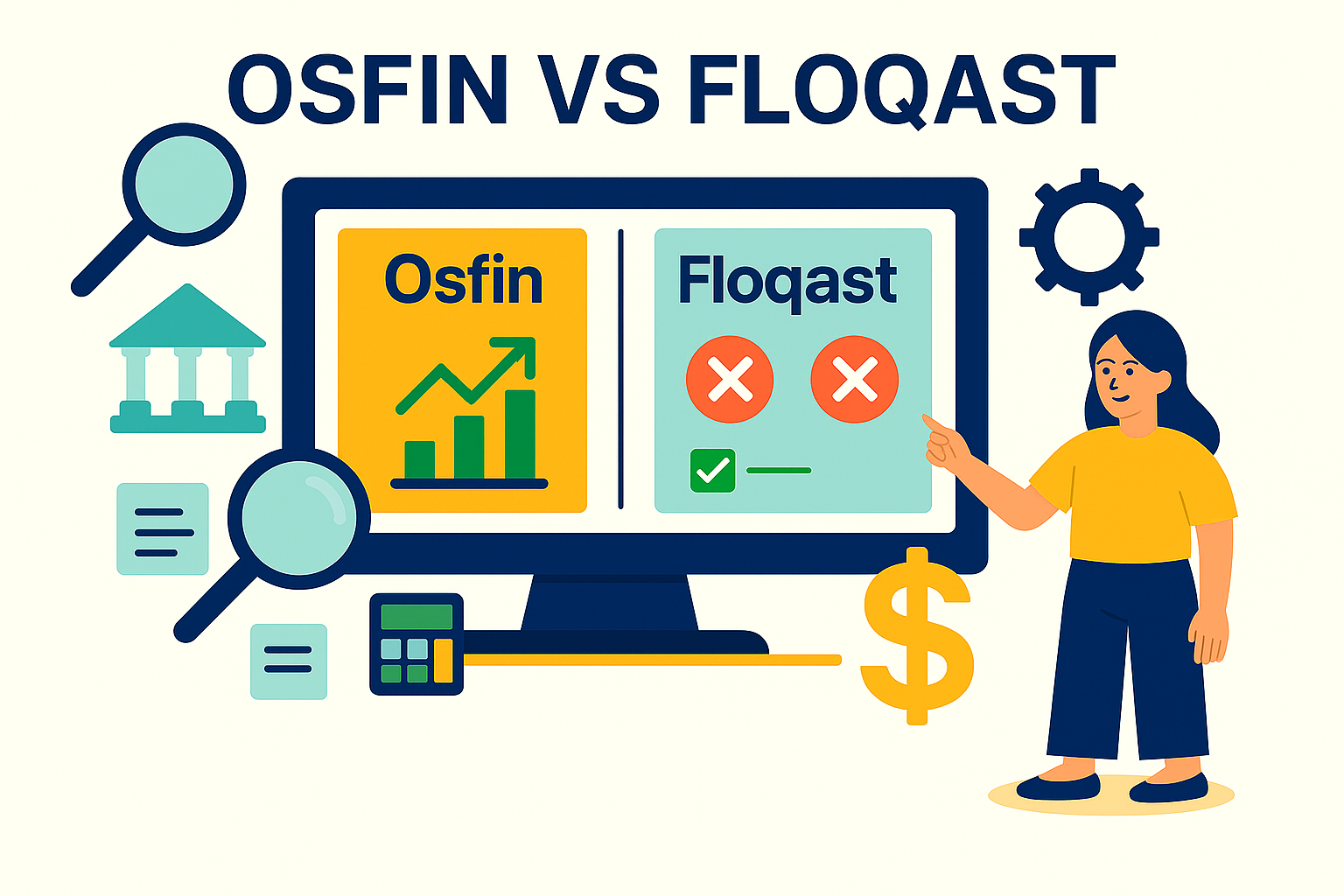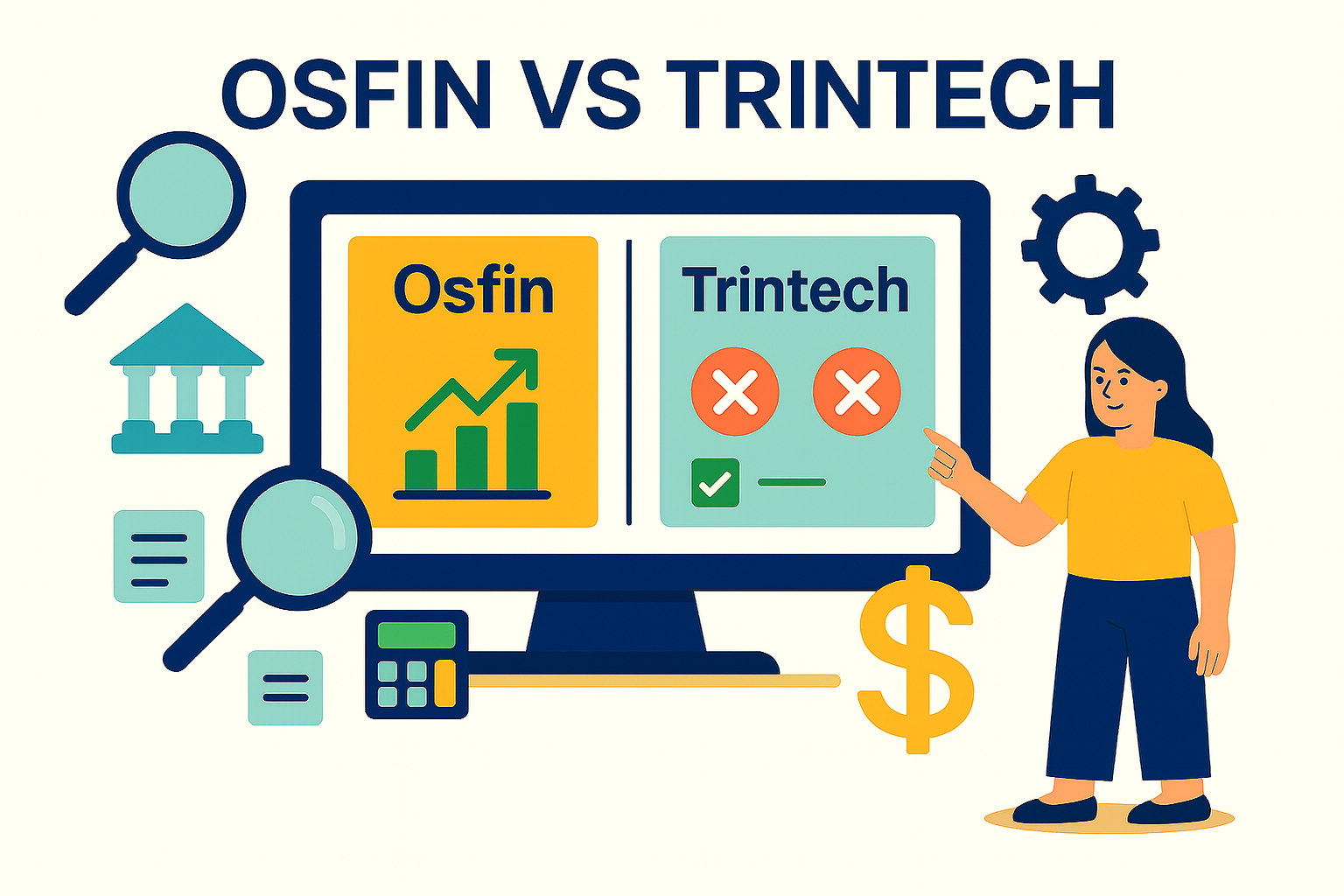Automate Your Month-End Financial Reports With Speed and Accuracy
Every ending is a new beginning.
And in finance, the end of the month is the start of the analysis, review, and decision-making process. It's when the finance team scrambles to close the books, prepare reports, and ensure the numbers accurately represent the company's financial picture.
One of the key ways to streamline this process? Reconciliation.
When done correctly, and preferably automated, reconciliation guarantees that your reports are not just accurate but also reported in less time.
Here, let's look at how reconciliation takes your month-end financial reports to the next level.
What Is Month-End Financial Reporting?

reporting is the process of reviewing, verifying, and closing out financial
Month-end accounting reporting is the process of reviewing, verifying, and closing out financial records at the close of each calendar month. It encompasses:
- Accounting for all the transactions of the month
- Reconciliations and balancing of accounts
- Any required journal entries and accruals
- Preparation of standard accounts such as the balance sheet, income statement, and cash flow statement
Purpose of Month-End Reporting
Here's why month-end financial statements are so important in building and maintaining a well-operated organization:
1. Performance Monitoring
Month-end closing reports provide a regular perspective of your business's financial advancement. Through checking revenue, expense, and profit margin periodically, you can analyze whether individual departments, projects, or product lines are performing well or not.
2. Error Identification
Reviewing the complete financial picture every month helps catch problems that may fall through the daily review, such as lost entries, duplicate payments or receipts, or misclassifications. Catching these mistakes early makes year-end audits easier and keeps your books clean and trustworthy.
{{banner2}}
3. Regulatory Compliance
A monthly financial close process helps ensure compliance with financial reporting requirements like Generally Accepted Accounting Principles (GAAP) or International Financial Reporting Standards (IFRS). Documenting and reconciling transactions on a regular schedule helps you avoid the risk of penalties, gaps in reporting, or last-minute rushes in audits or tax submissions.
5. Budgeting and Forecasting
Trusted month-end data enables you to compare forecasted data against budgeted amounts and identify spending habits or seasonal influences that affect your projections. With time, this makes your financial planning more accurate and adaptable.
6. Customer Trust and Retention
Month-end closing reports allow for quicker detection of inconsistencies in customer accounts. It could be a payment discrepancy, a fee mistake, or a missed credit. This instills confidence in your operations, lowers resolution time, and minimizes escalations or disputes. With time, such accuracy helps build customer service, increase loyalty, long-term retention, and lower churn.
7. Decision Support
From investment and hiring decisions to growth projects and cost control, leaders require up-to-date financial information to make informed decisions. Month-end financial reports consolidate the numbers and context necessary for data-driven decisions at all levels of an organization.
What Are the Key Metrics to Include in a Month-End Financial Report?
Good month-end financial statements identify key indicators of financial performance. Some of them include:
- Revenue: Total revenue obtained from goods or services in the month. It serves to measure sales performance, market demand, and the impact of campaigns.
- Gross Profit and Gross Margin: Gross profit is the portion of revenue that remains after cost of goods sold (COGS). The gross margin expresses this as a percentage. These numbers indicate the efficiency of production, service, and pricing strategy.
- Operating Expenses: Pays for rent, wages, power bills, etc. Monitoring helps keep costs in check, spot inefficiencies, and guarantee spending keeps pace with business growth.
- Net Profit: The bottom line, the profit after every expense. It provides insight into financial well-being and enables consideration of how efficiently the business turns revenue into profit.
- Accounts Receivable and Accounts Payable: Reveal how well you're paying suppliers and collecting from customers. Critical to having a steady cash flow and preventing financial pressure.
- Cash Flow: It follows the actual money coming in and going out. It is crucial to understand liquidity and ensure the business can cover its day-to-day expenses.
- Inventory Turnover: How frequently inventory is sold and replenished. High turnover indicates good sales; low turnover can indicate overstocking or sluggish merchandise.
- Days Sales Outstanding (DSO): Average collection period for receivables. Lower DSO indicates quicker payment and better cash flow; higher DSO requires follow-up or policy modifications.
- Variance Analysis: Compares performance to budgeted targets. It calls attention to unexpected variations and helps identify areas that require focus or strategic realignment.
{{banner3}}
Benefits of Month-End Financial Reporting

When done rigorously and regularly, month-end financial statements become strategic tools. It enables greater transparency, enhances decision-making, and lays the groundwork for long-term fiscal stability.
Let's take a closer look at the key benefits:
1. Improved Visibility
Month-end closing reports provide a current and accurate picture of the business's financial standing. Management can immediately identify trends, solve problems, and seize opportunities without relying on outdated or incomplete information.
2. Improved Internal Controls
Regular monthly financial close process prevents anomalies, mistakes, or the possibility of fraud from going undetected for long. It encourages accountability, ensures compliance with internal policies, and cultivates a culture of fiscal discipline.
3. Operational Efficiency
Monthly insights help identify inefficiencies. With this insight, teams can refine their workflows, allocate resources more effectively, and enhance performance, ultimately leading to improved operations.
4. Stakeholder Confidence
Sound financial reporting establishes confidence among internal teams and external stakeholders, including investors, lenders, auditors, and board members. It conveys professionalism, transparency, and financial control, opening doors to new opportunities.
5. Saves Time in the Long Run
Although month-end closing reports may require constant effort, they significantly reduce year-end catch-up time. Clean books, current reconciliations, and files in order, resulting in easier audits, faster forecasting, and easier annual reporting.
Challenges in the Traditional Month-End Close Process

Although month-end financial statements are critical for sound financial management, the process itself tends to be tedious and prone to errors.
Let's examine the typical limitations teams encounter during a traditional month-end close:
1. Manual Reconciliation
Most reconciliation still happens through spreadsheets to match transactions between systems. This process is not just time-consuming but also vulnerable to errors. To make matters worse, it is not transparent; when the individual handling reconciliation is out of the office, others may struggle to replicate their work.
2. Siloed Systems
Financial information tends to reside on multiple systems, rendering the data gathering process for monthly financial close labor-intensive and error-prone. Without integration, teams spend time exporting, formatting, and consolidating data, raising the risk of duplication or mismatches.
3. Last-Minute Adjustments
Late bills, omitted entries, or eleventh-hour expenses can throw the closing schedule off track. Every new tweak requires teams to reconfirm figures, which slows the process and increases the likelihood of overlooking something, particularly under a deadline.
4. Lack of Standardization
Without a formal checklist or process, month-end becomes a haphazard affair. Teams often employ ad hoc procedures, resulting in steps being omitted and work being repeated. The monthly financial close process then relies more on institutional memory than on codified processes, slowing it down when there is staff turnover or vacancies.
5. Stressful Workload
Month-end usually involves late hours and intense pressure as teams balance approvals, reconciliations, and reporting in short time frames. This constant pressure can contribute to burnout, particularly for lean teams in smaller or rapidly expanding organizations.
Role of Reconciliation in Financial Reporting

Done correctly, reconciliation enhances the speed and accuracy of month-end financial reports. Here's why:
1. Prevents Errors and Fraud
Reconciliation identifies errors such as duplicate transactions, incorrect postings to accounts, missing bills, or inaccurate calculations of taxes or currency. It can also identify unauthorized or unapproved transactions.
2. Increases Confidence in the Data
Confirmed and reconciled figures enhance the credibility of financial reports. Management can make informed decisions without questioning the numbers, and outside stakeholders such as auditors or lenders notice proof of good financial hygiene.
3. Accelerates the Close Process
Handing reconciliation over to month-end leads to stress and raises the risk of mistakes. However, when reconciliation is performed regularly, preferably on a daily basis, most discrepancies are corrected in real-time.
This approach:
- Leverages end-of-month work
- Eliminates delays due to last-minute repairs
- Saves time for analysis
{{banner1.1}}
4. Enhances Audit Readiness
Reconciled records deliver neat and structured documentation, a welcome relief for auditors. A solid audit trail with explanations for adjustments minimizes the time spent resolving discrepancies.
How to Automate Month-End Financial Reporting?

Automation is reshaping finance operations, making reporting more streamlined and less prone to error. Here's how you can automate the monthly financial close process:
1. Adopt Cloud-Based Accounting Tools
Platforms such as NetSuite, QuickBooks, or Zoho Books can consolidate data and enable real-time reporting dashboards.
2. Use Reconciliation Software
Software like Osfin can automatically reconcile transactions and highlight discrepancies, thereby minimizing the need for manual intervention.
3. Integrate Systems
Ensure your accounting software integrates seamlessly with CRM, payroll, sales platforms, and bank feeds to prevent data duplication.
4. Automate Checklists and Approvals
Automate your monthly financial close process by having task checklists with automatic approvals, reminders, and tracking.
5. Use Dashboards for Visibility
Real-time reconciliation dashboards enable leadership to monitor progress and pinpoint bottlenecks in real-time, without waiting for final reports.
Simplifying Reconciliation with Osfin
Month-end financial reports are essential, but it doesn't have to be sluggish or stressful. The solution is to combine best practices with intelligent automation that gets your numbers clean, accurate, and reporting-ready.
Designed for finance teams today, Osfin streamlines reconciliation with:
- 100% precision through automated, real-time matching
- A low-code platform that's simple to configure—no IT constraints
- 170+ ERP, CRM, POS, bank, and other integrations
- Simple, intuitive dashboards that transform data into meaningful insights
- Automatic, continuous reconciliation that eliminates last-minute surprises
With Osfin, your team gains control, speed, and clarity, enabling you to put an end to chasing numbers and start delivering strategic value.
{{banner1}}
FAQs on Month-End Financial Reports
1. How long should the monthly financial close process take?
An efficient close should take 3-5 business days. Anything over a week usually indicates inefficiencies or manual dependencies.
2. Is daily reconciliation superior to monthly?
Yes. Reconciling on a daily or weekly frequency takes the load off month-end and enhances real-time financial accuracy.
3. Can small companies profit from automated reconciliation?
True. Automation is often even more beneficial for smaller companies that must accomplish more with fewer resources.
4. What is the risk of bypassing reconciliation?
Bypassing reconciliation increases the likelihood of reporting mistakes, fraudulent transactions that go undetected, and erroneous financial information, and all have significant business implications.


